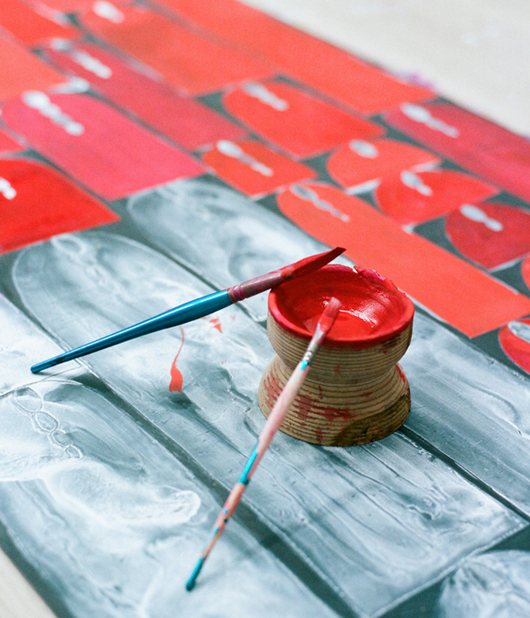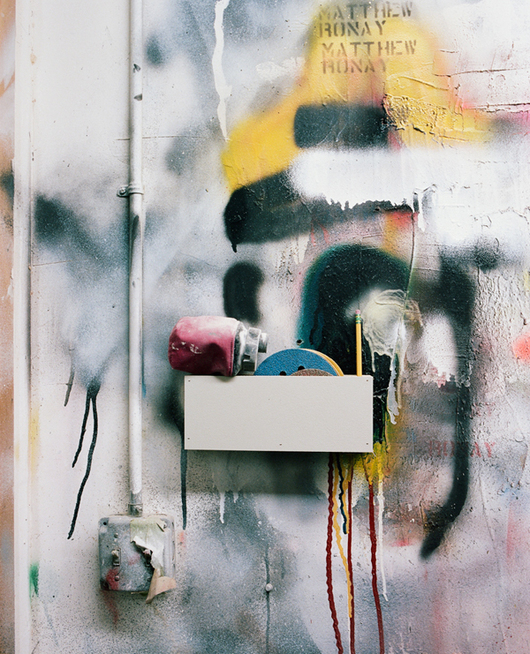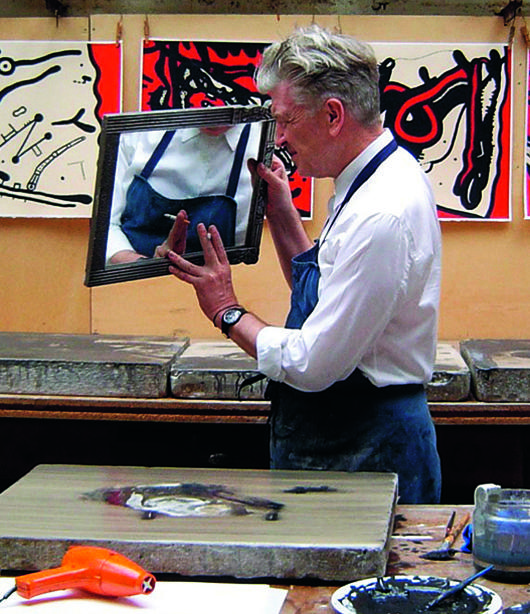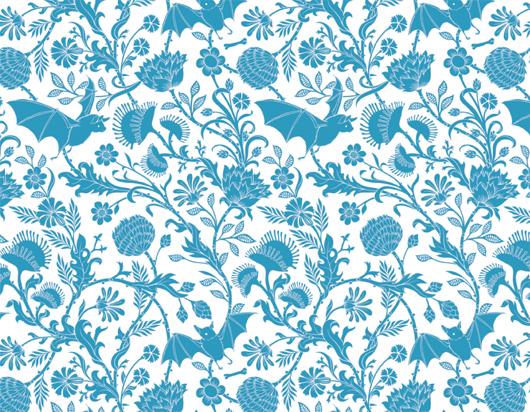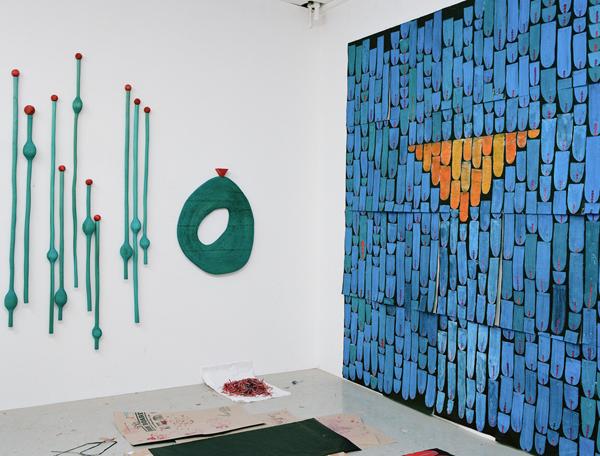
01.21.13
Sighted
Matthew Ronay on You Have Been Here Sometime
PHOTOS BY BRIAN FERRY
Long Island City, New York, is a vibrant up-and-coming neighborhood, home to MoMA PS1 and more than a few buzzy new restaurants. But it’s also quite industrial, and prone to long, lonely stretches of aesthetic drabness that can alienate the casual visitor. The last time I toured an artist’s studio there, nearly a decade ago, it was a woman who painted eye-poppingly bright, striated color fields almost compulsively, as if to insulate herself from the world outside her door. I don’t purport to know Matthew Ronay‘s relationship with his adopted surroundings — he was born in Louisville, Kentucky in 1976 — but his paintings and sculptures certainly add up to one big escapist fantasy: His last big show in New York, at Andrea Rosen Gallery in 2011, was a three-dimensional enchanted forest populated with unidentifiable creatures and eyeball trees, while his latest work revolves around a wall that he imagines to be a portal to another world, perhaps one that looks less like a dreary factory yard and more like a sunny idyll.
Maybe that’s why Los Angeles designer and Sight Unseen pal David John is so drawn to it? John interviewed Ronay last week on his cult blog, You Have Been Here Sometime, and invited imminent Sight Unseen contributor Brian Ferry to shoot the artist’s studio. “When I look at these gorgeous photographs through Ferry’s eyes, I’m drawn to the colors in Ronay’s latest works,” John writes. “A large wall hanging in electric blues, amorphic sculptures in acid oranges, and Matthew sitting in the middle of it, engaged with his craft, hiding among the trees.” Read a short excerpt from the interview here, then follow the link down below to see the rest of the piece.
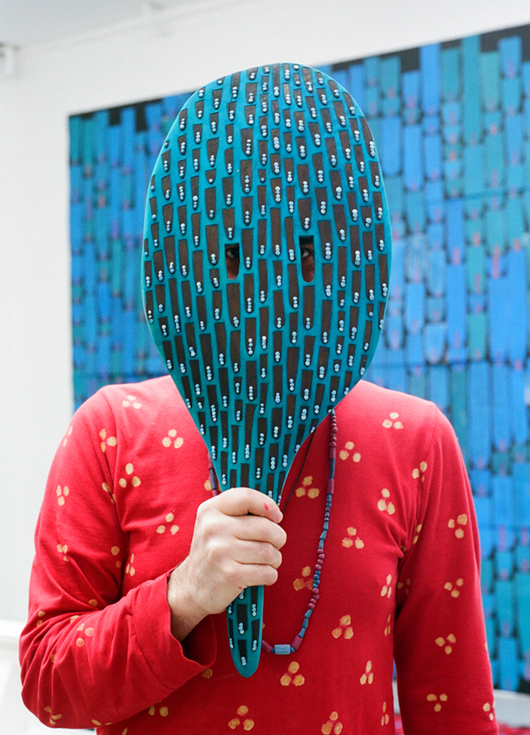
Excerpted from an interview by David John
Drawing. How do you draw, with what utensils do you prefer to draw? What makes a “good” or “preferred” drawing?
“I have many different ways of drawing. But all forms of drawing I’ve always felt are closest to the flame of creativity. Depending on what the necessity of desire is, drawing changes. The two most enjoyable to me are drawing done to satisfy the conscious urge to create (which can be done consciously or unconsciously), and the other is drawing done unconsciously. Satisfying the creative urge happens anywhere, from in bed, to the subway, in the studio. It is deliberate and it is usually complete in transmission and done quickly. Unconscious drawing, or doodling I suppose, I find more enlightening in its lack of imposed will, as if it comes out of your muscles and inner being and has no timeline. I think it’s for this reason that it happens while you’re on the phone, playing cards (in the case of Charles Burchfield), or extremely relaxed. This kind of drawing I think of as vertical while the other type tends to be more dispersed and horizontal. With both of these types of drawing I wouldn’t say that I see something behind my eye and I breathe life into it. It’s more abstract than that. it’s almost non-visual, like touching something in the dark. I’m never quite sure what will happen.
“My materials change over time. I change the paper I use over three of four year periods. Right now I use note pads that I find around or steal from my studio-mate, or I use the Japanese notebooks by KOKUYO that give me the opportunity to have a little more continuity. I use a Papermate PHD mechanical pencil mostly. But I also like the Unit-ball Vision fine point roller ball, or the Le Pen is fun. Sometimes but very rarely I do gouache or water colors. To me a good drawing has a magnetic feeling that illuminates the self. It feels right. It usually has a great balance of familiar and unfamiliar. But also I sometimes prefer a drawing that requires more effort and patience, that has nothing to do with searching and more to do with marking time or repeating lines and shapes. Another type of drawing that is enjoyable is a more practical type. A kind of drawing that I do when I need to investigate form or the placement of things. I already know the image I just need to find out what feels right. It’s so much faster than sculpting and with no risks. This is something I do in the studio and I find mysterious because there are so many permutations on the same theme, each almost the same yet totally different.”
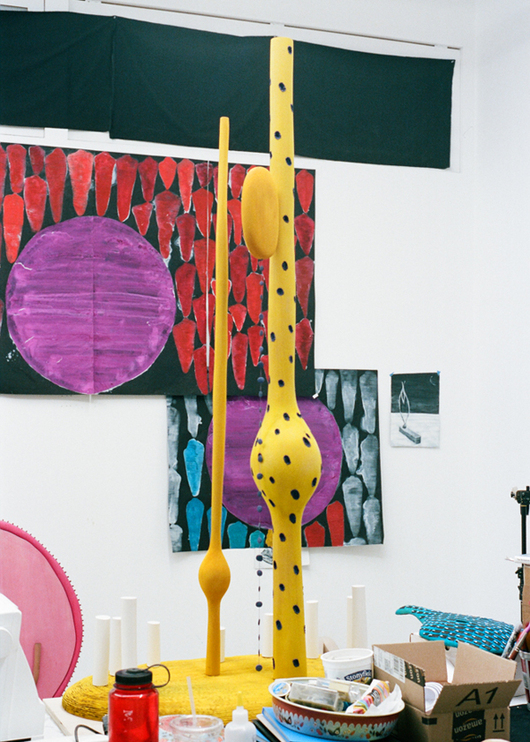 The large blue wall hanging in your studio with the orange triangle (top). Tell me about this work. The materials, the forms, the narrative if there is one.
The large blue wall hanging in your studio with the orange triangle (top). Tell me about this work. The materials, the forms, the narrative if there is one.
“The materials are gouache and shellac-based primer on cinefoil. Cinefoil is a matte black aluminum foil that is used in photography to mask lighting. The piece is part of a large tableau I’m working on for the Lyon Biennial. This part is the back wall of the piece. The piece in its simplified form is the journey from this world to another. This wall is the threshold. It’s a waterfall of tongues, of breaths, of phalluses falling. The repeating shape is something that I drew over and over again for quite some time, but never landed on completely until I made that painting. After working on this piece I found the shape continues to unfold. At first I believed it was a penis, naturally, but I moved on to tongue, fingernail, seedpod, vessel, body, etc. And then I believed it was something more abstract: a word, a breath. It takes the same place that the ‘white light’ might take. it’s the veil before the next chapter.”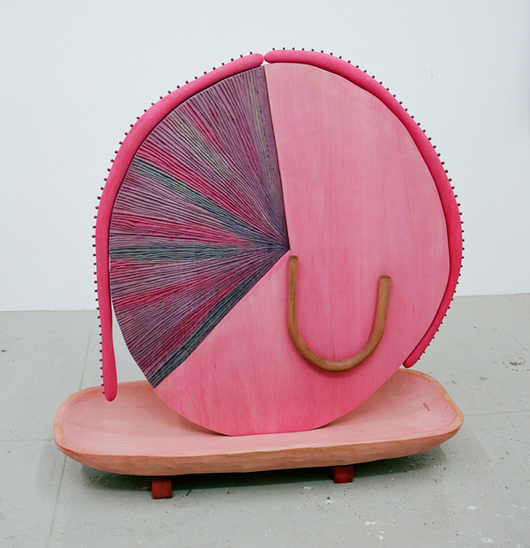
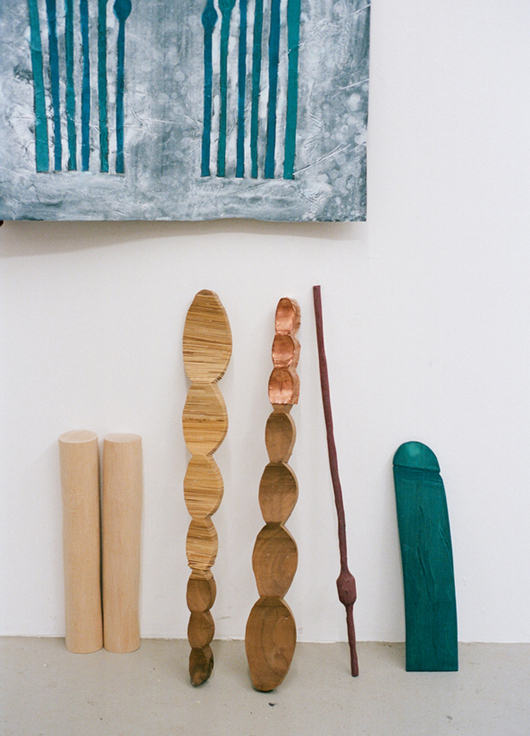 The orifice. This is central to your work. What excites you about exploration of the orifice?
The orifice. This is central to your work. What excites you about exploration of the orifice?
“The orifice fascinates me because it is the barrier between us and the world. We can also experience it as a wound, which I find interesting. The orifice is the portal, the portal is often the entryway to the unknown, and the unknown has such great potentialities. I respond to the fluids that come out of the body. The processes of digestion and respiratory systems and their relationship to waste is so multilayered, and the orifice is at the center of all of these. Hearing, breathing, shitting, seeing. And I think sculpturally there is this ‘doubting Thomas’ to the orifice and the wound. A kind of ‘is it real?’ How does it work? I like its negative space quality, it’s very suggestive. And of course the sexual, birthing aspect, the feminine aspect I find comforting and knowing.”
David John’s interview with Matthew Ronay continues at length back at You Have Been Here Sometime. Click here to view it in its entirety, along with many more photos by Brian Ferry!